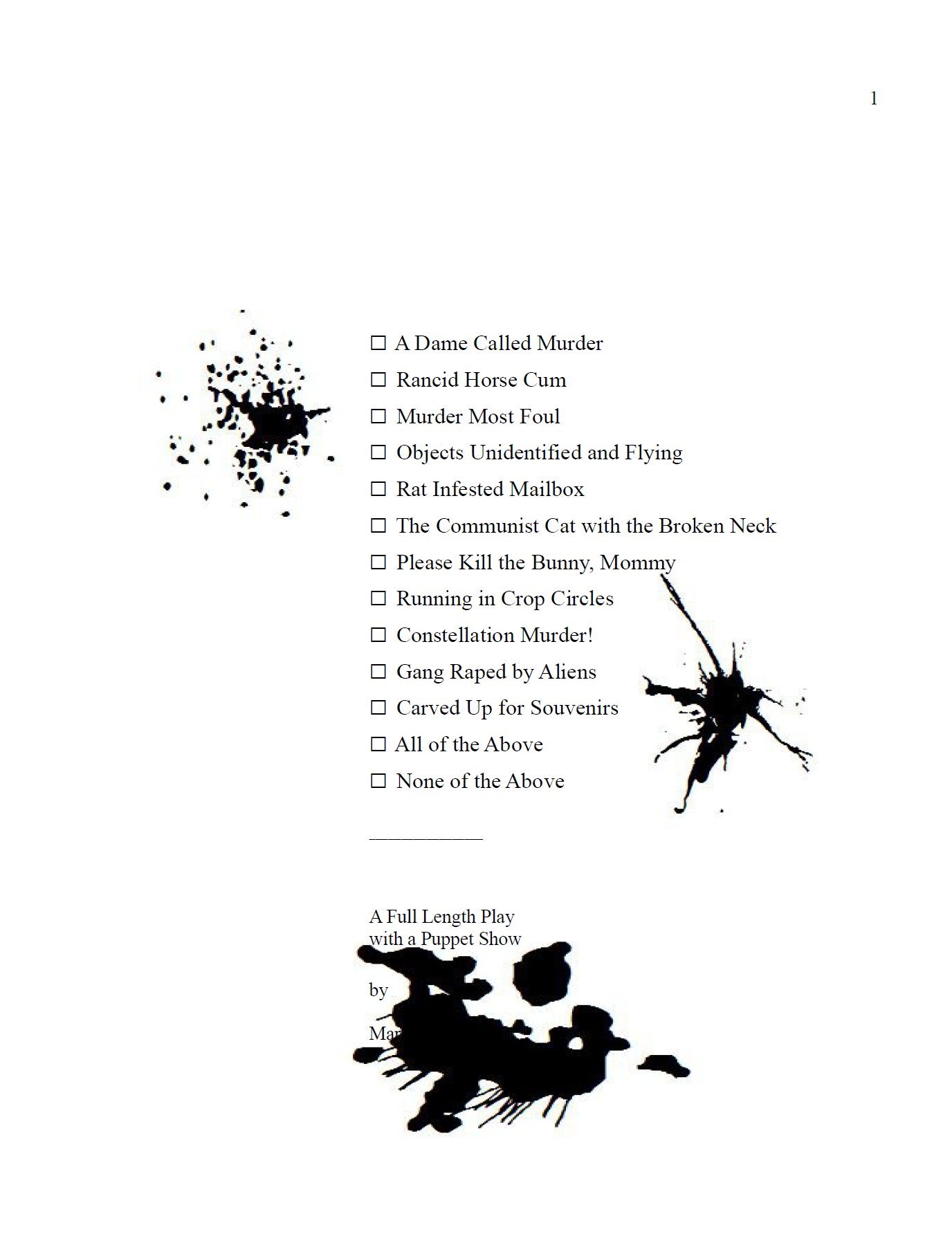My Nontraditional Plays
I have written far more nontraditional plays than I thought. My first estimate was four. It is actually eight, three of which were produced, one of those produced twice, the second time in New York.
I thought making them available might offer examples of the plot structures I'm writing about.
Note: the scripts have a dialogue structure that's akin to free verse. This explanation is from the author's note in MFMD.
"Verse: The dialogue is in free verse; every return is a shift in thought, position, or mindset.
Punctuation: Never arbitrary and always very purposeful. I think of punctuation marks like driving: colons speed up as one does when approaching a yellow light, semicolons make a right turn (or shift in thought) and periods are full fucking stops regardless of their position in a sentence. Commas are a breath. An absence of punctuation is not a mistake; language will “trail off” like smoke dissipating."
These punctuation guidelines I developed from the staging practices of Unrehearsed Shakespeare using the First Folio Cue Script Technique.
I also use brackets [ ] to denote a significant pause. I also will not use any punctuation at all, repeat phrases, use various fonts, and, as you'll see, allow dialogue to take over an entire page.
In images, I've included segments of dialogue or the casts of characters. These plays, I realize now, are so "huge" that listing the characters is more illustrative of the story than attempting to provide dialogue. More often than not, the characters themselves are Objects.
Wonderland in Alice: the Uncertainty Principle was first produced in Lubbock, Texas (with quite a lot of controversary), and then in New York. It has a clear Chaos plot, as well as a Journey plot. TW: Vulva puppet, homophobic language, dead baby jokes, vomit, 9/11 reference.
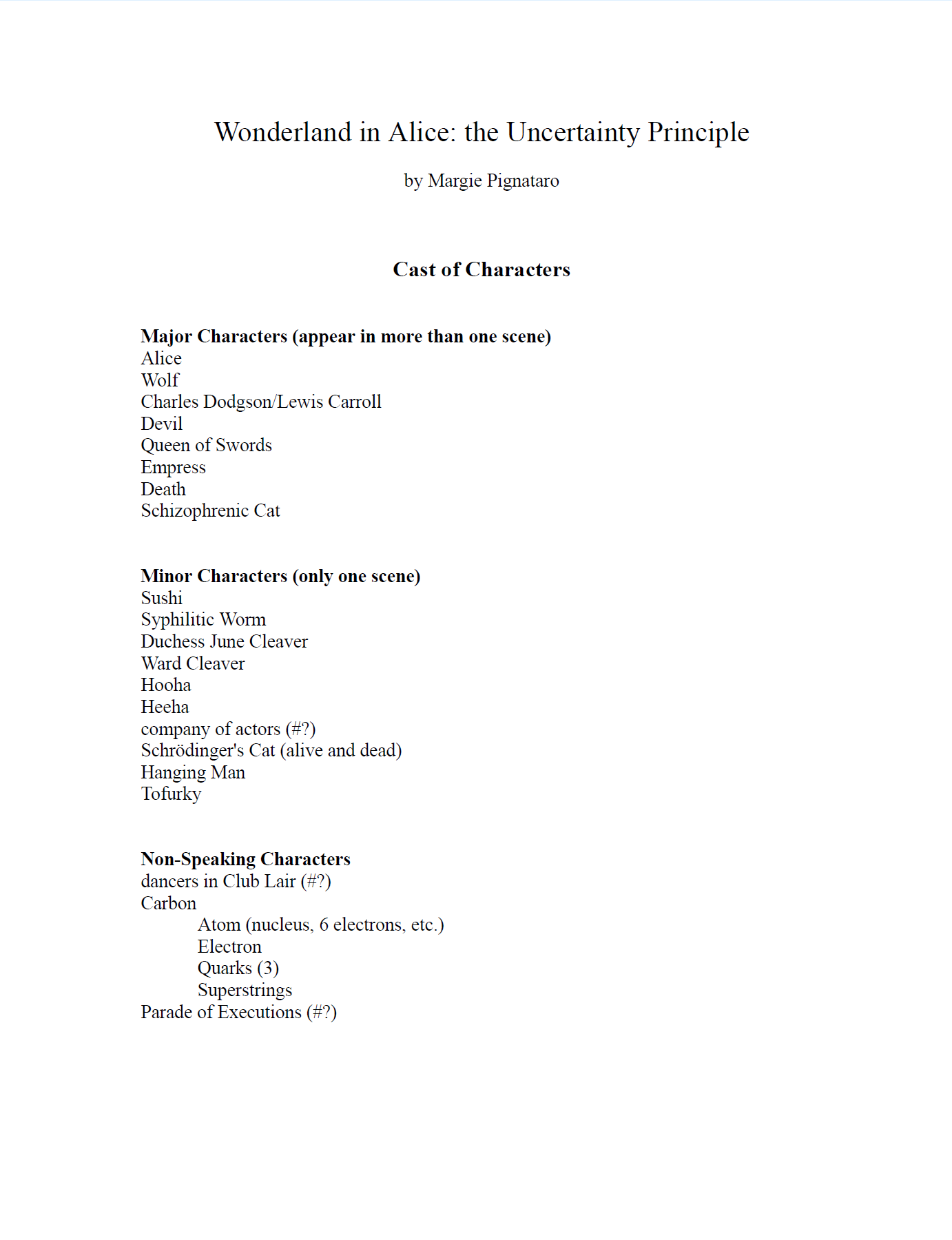
Solve for Castrato, or, Fatal to the Cause of Truth, was produced in Lubbock, Texas, with a bit of controversary. It has a Chaos, Object, and Asymptote structure. TW: graphic description of mutilation of a child.
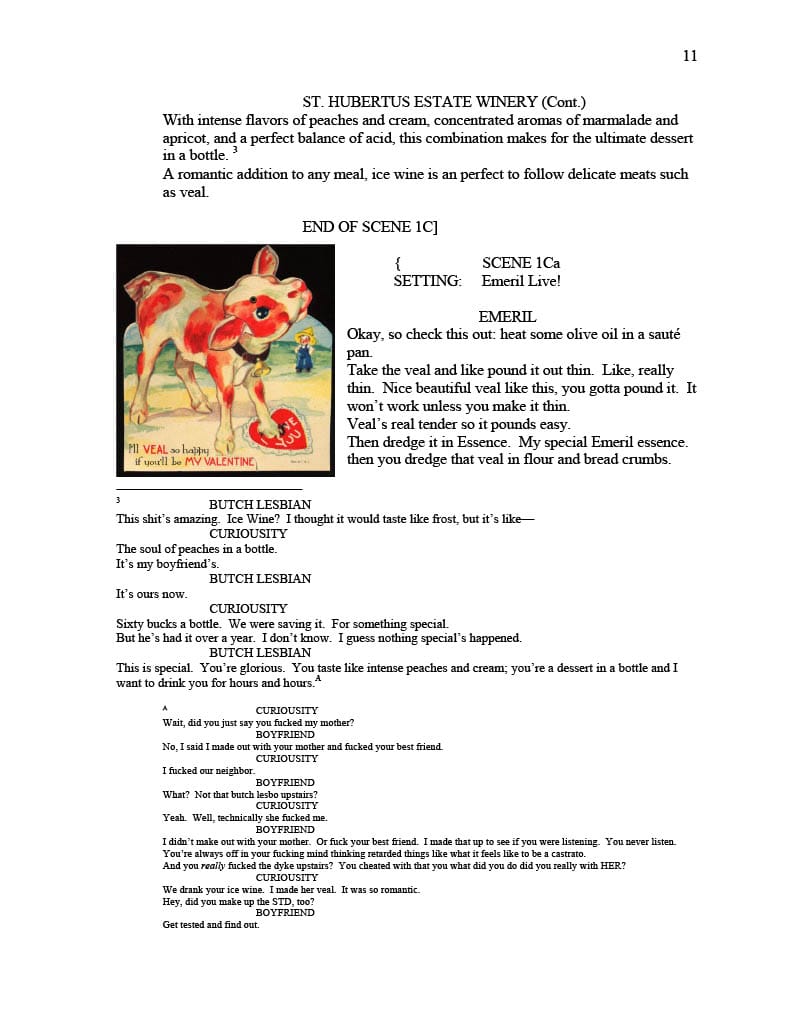
Meeting/Fucking/Marrying/Divorcing (MFMD) is the most batshit crazy script I have had produced. It was done in Lubbock, and the local theater critic (only one) said on a local country music radio station that the production was "filthy material that is well acted". This has a Chaos and Object plot. The script is in a "rescued" state; I had assembled it using Microsoft Publisher back the late 2000's and converted it to a pdf online. TW: Language, sexual situations involving the Virgin Mary and the Angel Gabriel, excerpts from 120 Days of Sodom, vulva puppet.
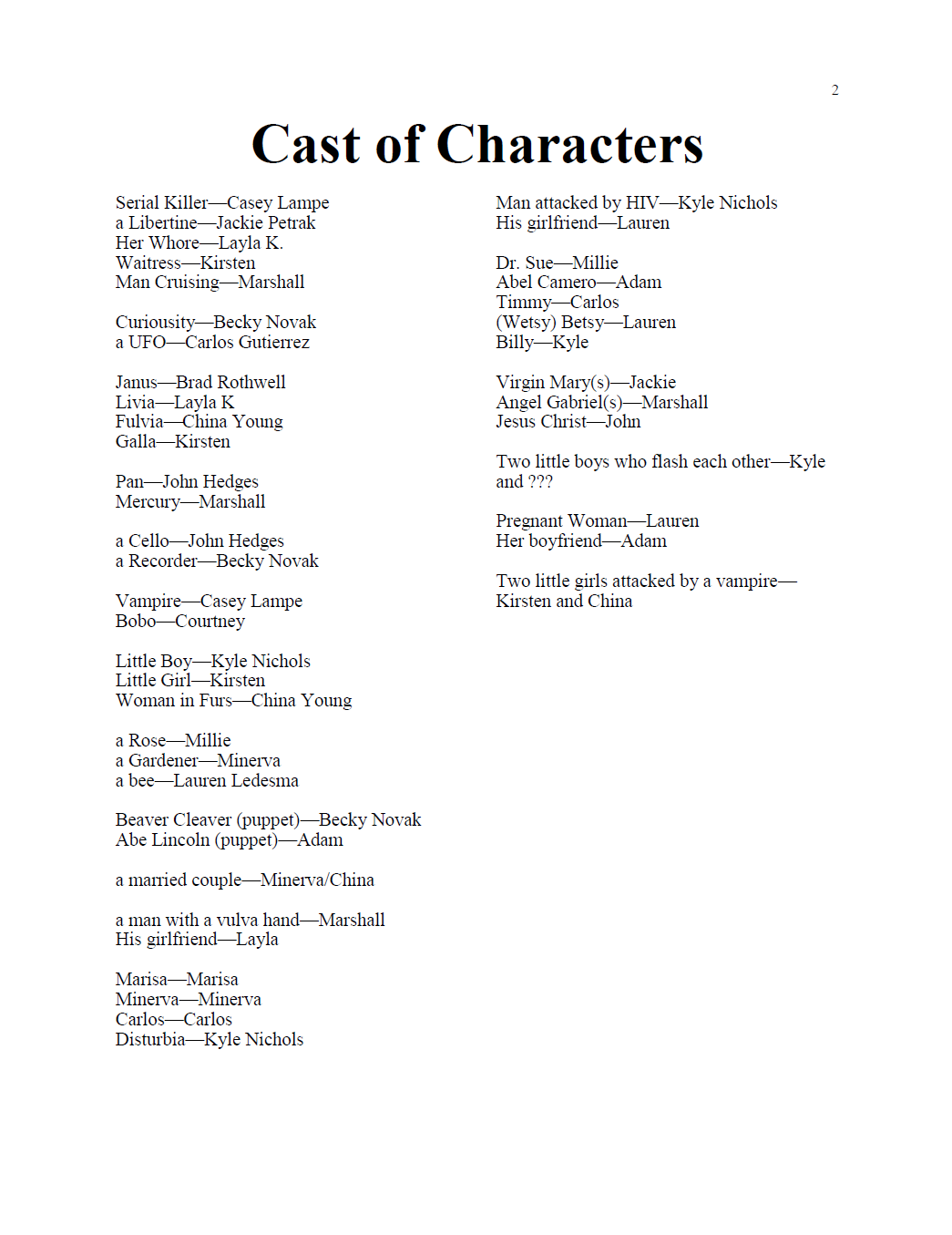
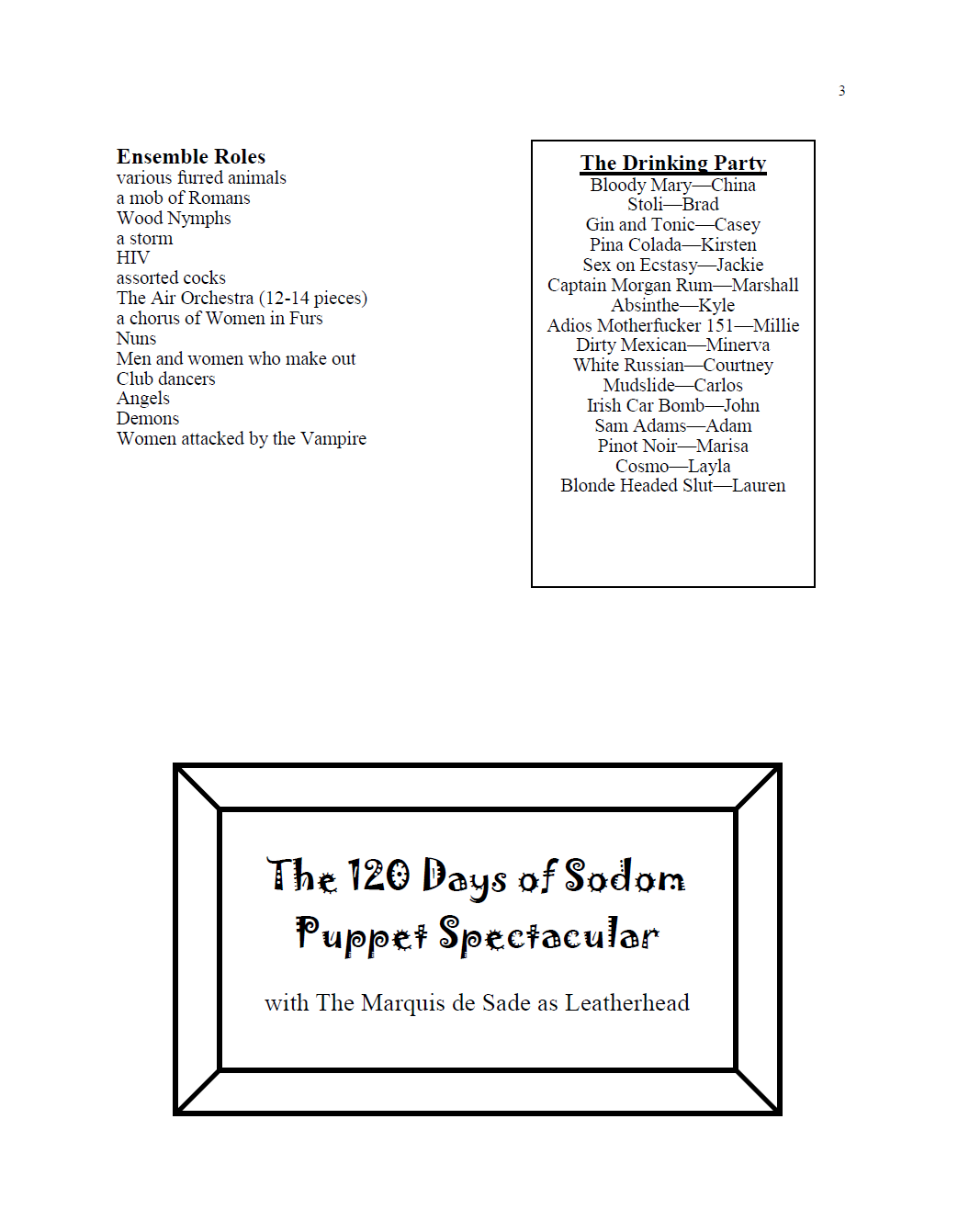
The Temptations of Saint Anthony was a project for a doctoral class in theatre theory. The last page of the script should have a hole in the page. It is Chaos and Object, for sure. This was another script restored from an ancient Microsoft Publisher file. TW: sexual situations.

JH is a Cycle of Dr. Jekyll and Mr. Hyde, as well as Chaos and Asymptote. This play was to be one of my two dissertation plays. My second dissertation proposal was about horror and nontraditional playwriting: can something still be horrifying if it doesn't follow a Journey structure? I completed the play and began a second play that would be a Cycle of The Portrait of Dorian Gray, but I never finished it. I left the program before I could. JH has the most ambitious formatting I've ever developed: there are scans of pages of DJ&MH that are covered with handwritten additional texts. TW: Sexual assault, sexual situations.
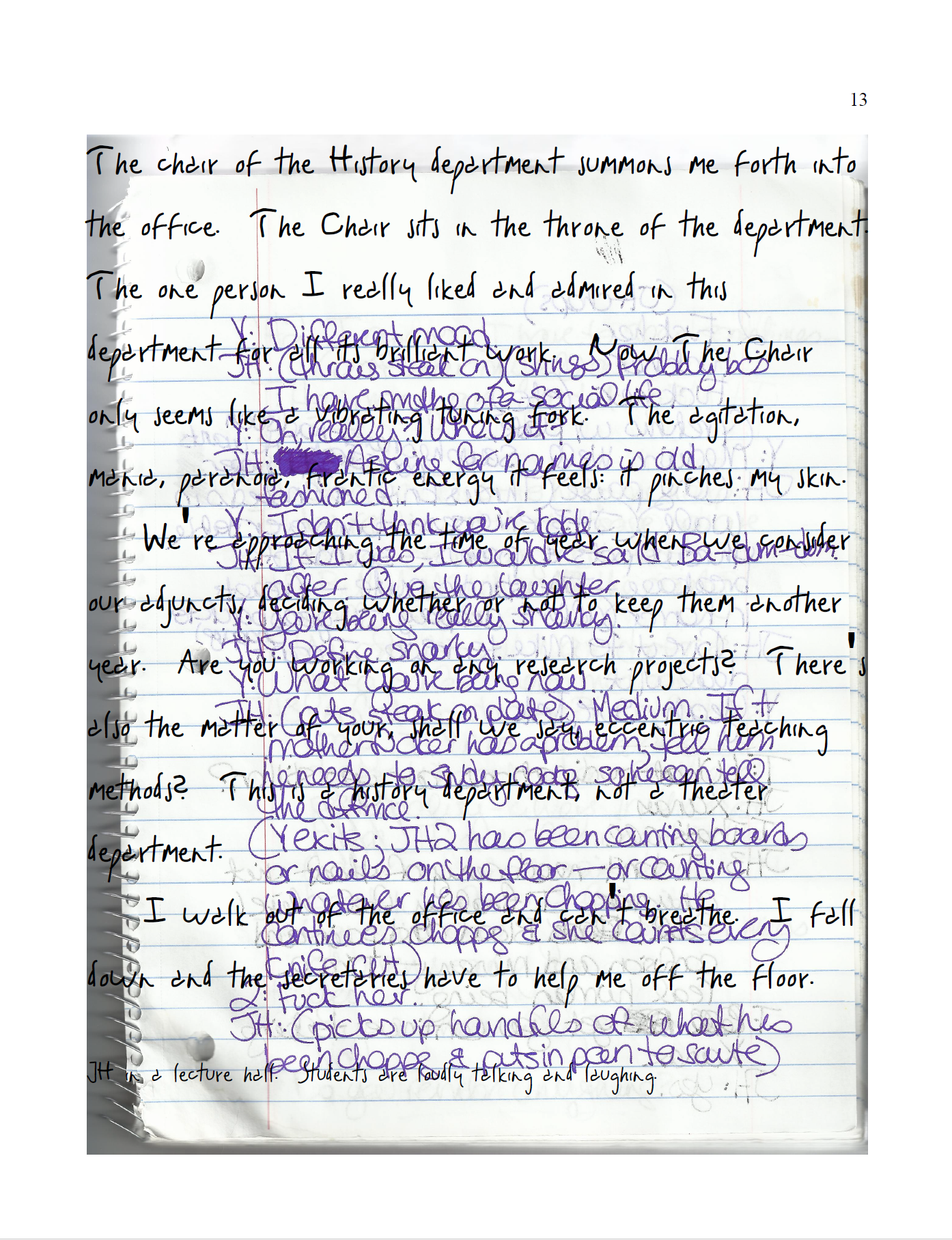
I'm not sure where to begin with Murder in a Place Called Christmas Time. It has a Journey structure, as well as Question and Information. The time element of the fabric of the reality of the play is whacked. Time constantly shifts depending upon who is speaking. It could also have a Superposition plot, but I haven't developed my theory about Superposition structures enough to call it so. I have included the entirety of the first scene below to demonstrate how death and trauma have warped space and time. TW: graphic violence, suicide.
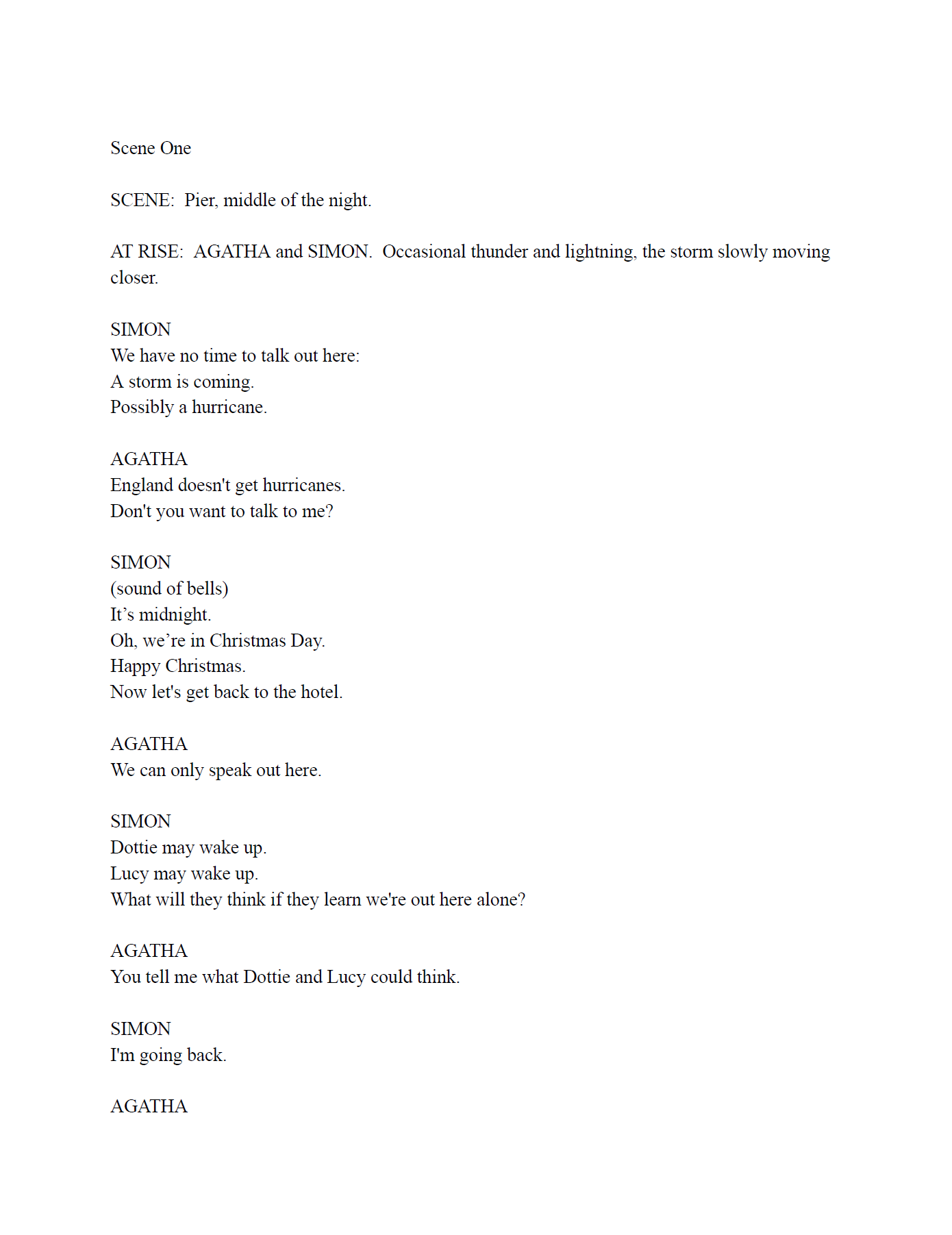


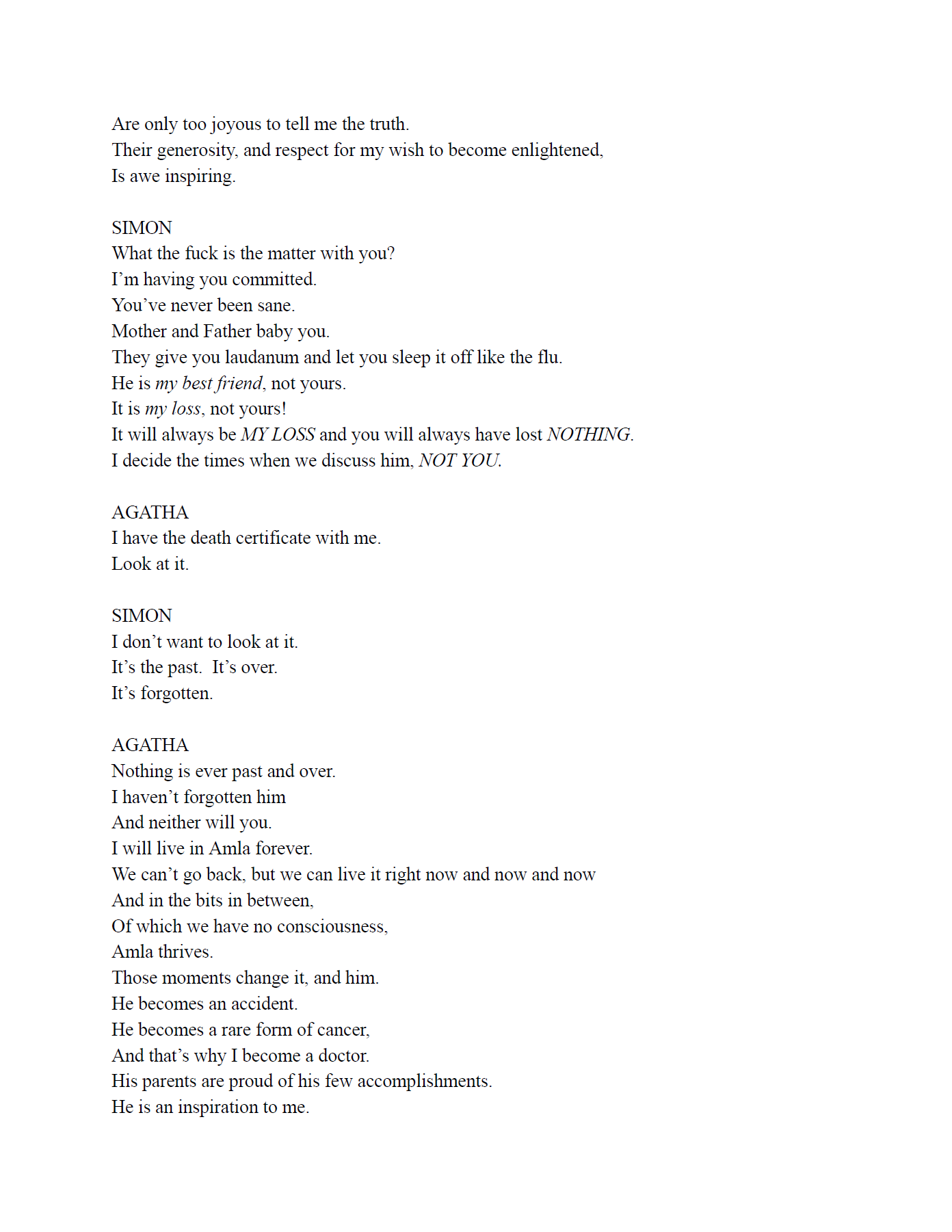
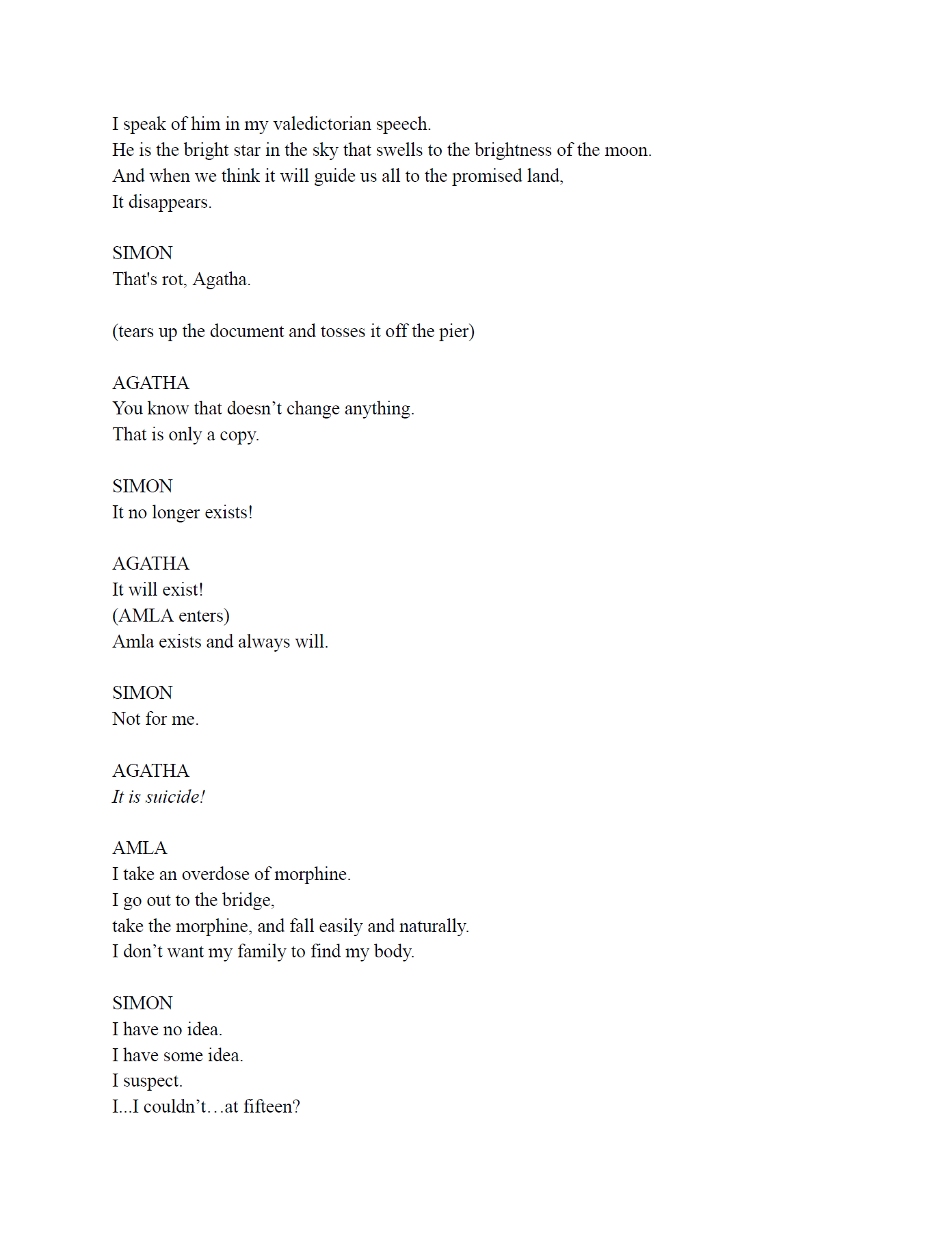

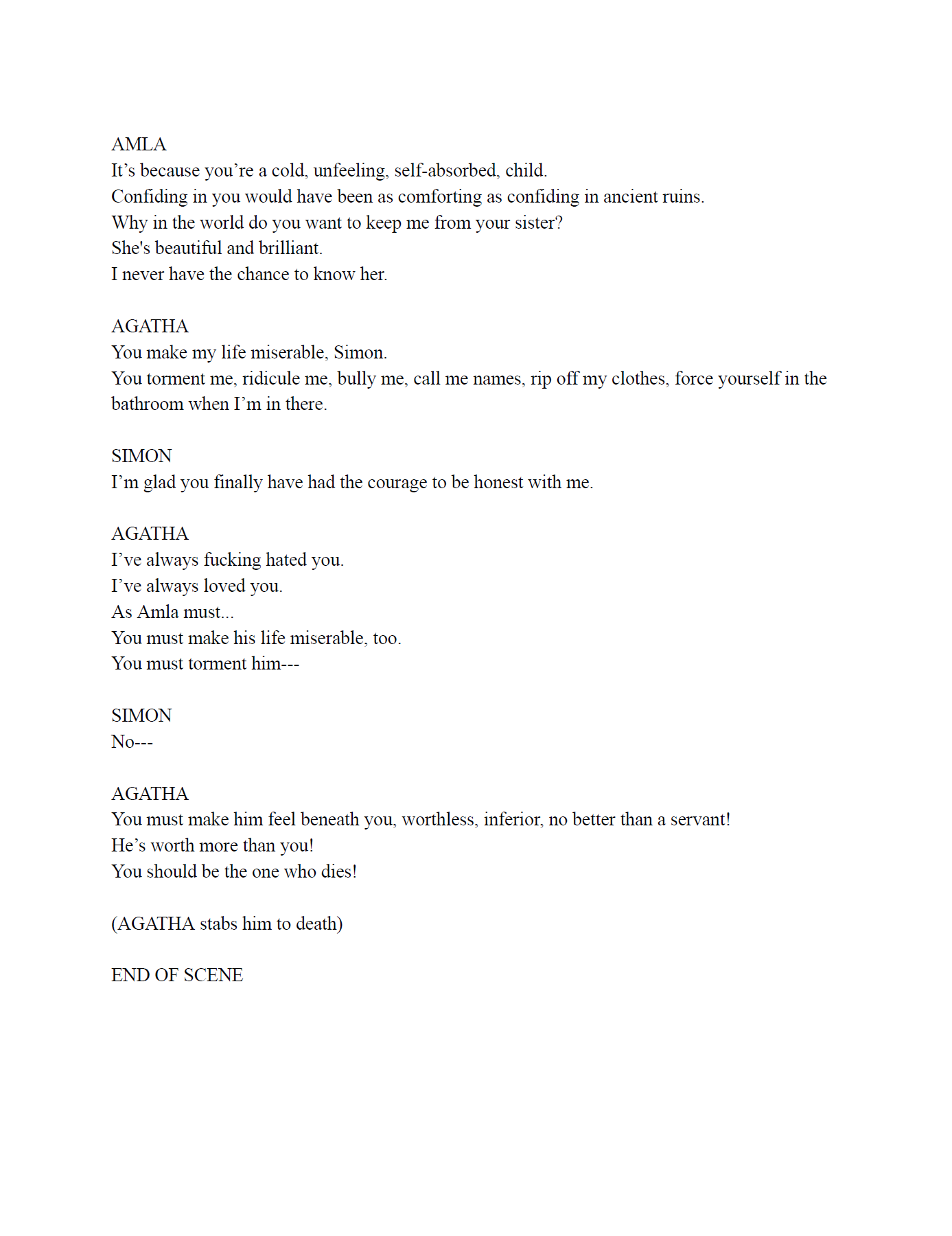
Madame Tussaud's Chamber of Horrors disturbs me. This play and the next two, The First Rumble of Thunder in the Quiet and None of the Above, unsettle me. I have no desire to reread them. I hadn't thought MTCoH was nontraditional, until I remembered how it twists history, time, and reality. I'm not sure how to classify it. It must have an Asymptote structure, possibly Portrait. TW: graphic sexual descriptions, rape, violence.
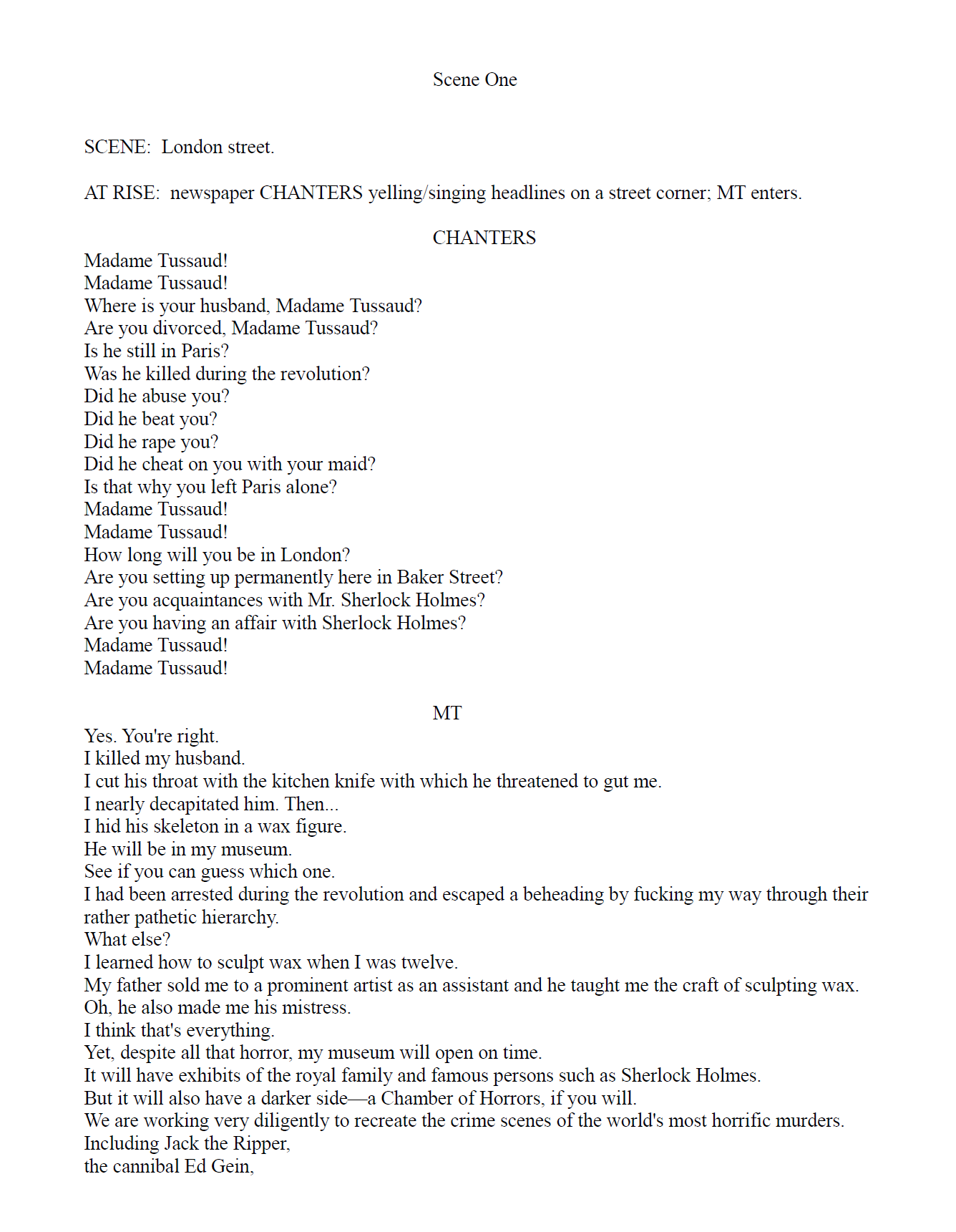
I rescued The First Rumble of Thunder in the Quiet from an old OpenOffice document. Those were the days when I struggled to make word programs let me format in crazy ways. I remember the file crashed several times and was so large it took forever to boot. This play takes place in the Cthulhu universe and it is fucked up. I'm debating developing it, fleshing it out, adding more texts, and fixing the ending, with which I'm unhappy and not sure why. It's Asymptote, Intertextual (more on this later), perhaps Portrait. It's another play I don't want to reread. TW: sexual assault, incest.

None of the Above is unbearable for me. I cannot read it again, which is sad because it has really wonderful Intertextual, Chaos, and Information structures. It has a ghost tour, a noir mystery, and an inquest performed by puppets. Oh, and a retro sci fi story. It's nuts and I don't know what I was thinking. It's packed with images I created using crude free programs on the internet. There are multiple fonts, splotches of ink, and no real resolution to anything that happens. TW: rape, violence, language, graphic sexual situations, language.
